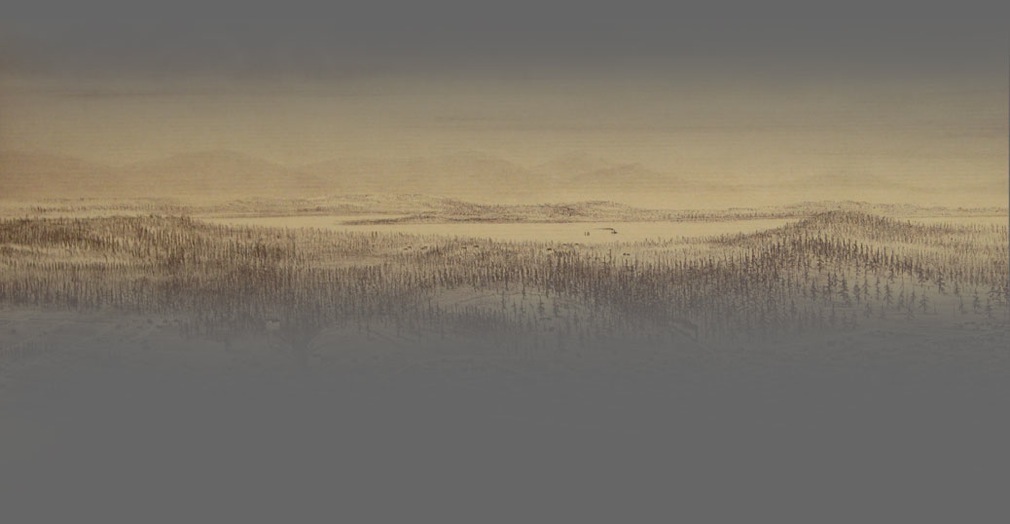
©2008 Vaun S. Raymond vaun@u.washington.edu
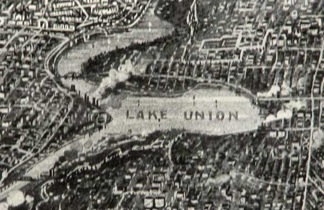
Living Lightly on the Lake
Contrasts
Looking at a bird’s eye view of Lake Union published in 1908 (right) it is hard to believe that only thirty years earlier (above) the lake was a nearly pristine wilderness, as it had been for countless centuries.
For more than 5,000 years before the coming of white settlers, Native Americans of the Duwamish tribe lived lightly on the shores of Lake Union. They called it by two names that compared it with what is now known as Lake Washington. In Lushootseed, their primary language, it was Ha-AH-Chu (“littlest lake”). In Chinook, an intertribal trading language, it was Tenas Chuck (“small water”).
A Cedar-Scented Life
The Duwamish lived in cedar plank longhouses, built next to streams that flowed into the lake from the surrounding hills or out toward Puget Sound. In the mouths of these streams they caught salmon and other fish, using traps and dip nets. They also stalked ducks and other wild fowl in the marshes that bordered the lake, using spears and large nets. Cheshiahud, the last of the ancient Duwamish to live on the lake, remembered hunting bear on what is now the University of Washington campus.
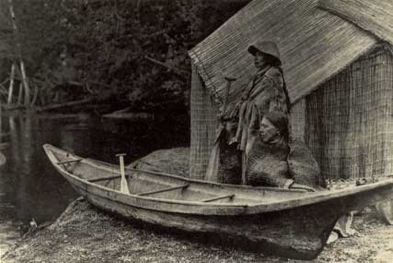
Women of the Skokomish Tribe, whose culture was similar to the that of the Duwamish
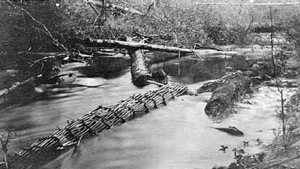
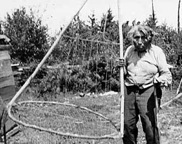
Native basket trap (above) and dip net (right), photographed in the 1920s in the White River Valley, not far from Lake Union
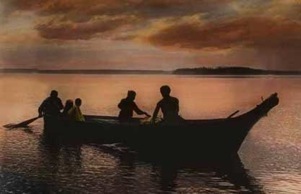
The Duwamish traveled and hunted on the lake using canoes they hollowed out from cedar trees. Bark from these same trees provided a fibrous raw material used for making baskets, clothing and the distinctive conical hats of this region.
Winter Resort
In addition to the lake’s year-round residents, there are also stories of Duwamish coming from around the local area to spend their winters in a seasonal camp at the south end of the lake, approximately where Lake Union Park is being developed today. There may have been a potlach house here, where people came to trade goods, stories and fellowship.
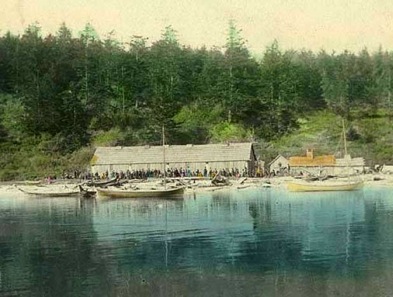
Skagit potlach house on Whidbey Island, 1902
IMAGE SOURCES
“Bird’s-eye view of the city of Seattle, W.T. Puget Sound, county seat of King County, 1884.” Artist: Henry Wellge. University of Washington Libraries Special Collections Division
“Bird’s-eye view of greater Seattle and vicinity, 1908.” By H. Epting. University of Washington Libraries Special Collections Division
“Skokomish Women, 1913.” Photographer: Edward S. Curtis
“Basket fishing traps, ca. 1925.” White River Valley Museum 439
“Big John with a dip net, probably in Auburn, ca. 1920.” White River Valley Museum 438
“Group canoeing at sunset.” Photographer: Edward S. Curits. Museum of History & Industry 2002.3.3103
“Skagit Potlach House seen from water, Whidbey Island, WA ca. 1902.” Photographer: Van Olinda. University of Washington Libraries Special Collections Division 564
RESEARCH SOURCES
“Legends of the Lake.” Wagner, Dick
“Indian John is Holding Potlach.” Seattle Post-Intelligencer, May 29, 1906
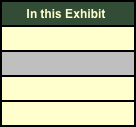
First People
Lake Life

